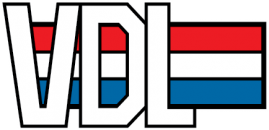Autonomous CropTeq Robot versus human labour
- Robots do have a predictable reliability
- Robots do have a consistent quality
- Robots do not need a course or training.
- Robots are never sick, do need no housing
- Robots perform on a competitive speed at a lower "salary"/annual depreciation.
- Wirth robots there is more control over virus spread.
And
- In the long run, one robot can do more and more, such as harvesting, sorting, etc.
- Artificial intelligence (AI) will open up even more new possibilities
- Unlocking data; light, moisture, temperature, CO2, shape, weight, etc
- More and more innovative end-effectors.

CropTeq SmartTrim
The CropTeq SmartTrim represents a one-armed robot that can cut 1000 leaves per hour. It cuts right along the stem, minimising the "wound" and minimize the chance of disease. The cutting device is continuously disinfected, again to minimize the spread of a virus or a disease.
The CropTeq robot consists of a robust stainless steel vehicle (AGV), containing the electrical hardware on which the AI and software runs, the batteries and the place for extra end effectors.
The CropTeq robot drives on both the pipe rail and the concrete path. He does this autonomously, driving without human intervention from the pipe rail, over the concrete to the pipe rail of the next path.
The CropTeq robot is powered by rechargeable batteries configured for your convenience. It enables continious performance. It can perform as long as required.
The USP, unique selling points
- Cutting straight along the stem.
- Cutting around the stem.
- It cuts at a guaranteed speed of 1000 leafs an hour.
- Cutting device constantly desinfected.
- Autonomous piperail change.
- Battery powered.
Is the Cropteq a gamechanger?
The simplest answer to this is; Yes. The VDL technology has a number of key features that make it a game changer. It is more than just replacing labour.
Return on Investment
For a grower, the payback period and the problem you solve with it is crucial. We believe that robotization is only feasible if the business case is good. Choosing well, what you are going to robotize is essential.
Platform thinking leads to more perspective
Our platform concept is basically a modular platform with defined interfaces. Standard solutions, components and functionalities are used with a roadmap to more.
Artificial intelligence, Making Automation Intelligent
Artificial Intelligence (AI) is a technology that has become a disruptive technology in recent years. Breakthroughs in a technique called deep learning are bringing new levels of performance to various AI applications, including computer vision.
AI and deep learning has enabled a first wave of successful consumer applications, powered by the leading companies, such as Google, Uber, Tesla, Facebook and Netflix. Now a second wave of AI industrial applications is achievable.
Machine learning, data versus knowledge.
For software programmers, machine learning is another way of programming. Traditionally, a software programmer, often an expert, writes the rules and conditions in his program, which translates input into a defined output.
With machine learning, things are really different. By giving it a dataset with the desired output, the machine (learning algorithm) learns itself how to generate an output for new data.
As an engineer, you train (modify) your deep learning algorithm (development environment) with your dataset, which you then use to generate your application software. With the generated software, your industrial product can autonomously associate new data with the trained output.
Machine learning is applicable to almost all industry segments, from finance to manufacturing. Predictive models help reduce costs, improve quality and enable new applications.
Deep learning
Deep Learning is a technique introduced by a Google team in 2012, which is increasingly applied and optimized for specific applications. Of course we use the available technology on which we have built our application.
Convolutional Neural Networks - AI algorithms that specialize in learning image data, used for things like detecting objects and people, taking pictures, and analyzing medical or scientific images.
Reinforcement learning - AI algorithms that specialize in learning, to take optimal sequences of actions. Mostly used for process optimization tasks and (robot) automation. Segmentation networks to give even better control to our robot movements with points clouds.

